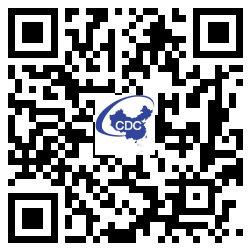《减盐电子周刊》双语版 2017年6月30日
发布时间:2017/08/31

《减盐资讯》汇总自上一期起最新的与钠摄入和减盐相关的新闻文章(或标题),大约每两周发布一次。内容包括:行业资讯、政府资讯、各州/地方资讯、国际资讯、新的调查和研究成果等等。目的是为了让公众对与钠相关的新闻话题有一个快速了解。
2017年6月17日到30日
乔治全球健康研究所高级主任及盐与健康世界行动澳大利亚分部主席Bruce Neal认为,澳大利亚人的平均日钠摄入量过高,但是大多数膳食钠并不是有意摄入的。他说,澳大利亚人百分之八十的食盐消费源自包装和加工食品,且澳大利亚人大多数膳食中的钠源自面包和麦片。Neal说,虽然每份食品仅包含“适量”钠,但是许多澳大利亚人一天之中都会进食面包和麦片,从而导致了总体钠消费量的增加。Neal说,每天进食食盐的健康范围为1-1.5克,但是“大多数澳大利亚人的摄入量是上述标准的5倍或10倍。”钠摄入过量会增加肾病、中风、心脏病和心力衰竭风险。Neal建议,减钠措施应以食品制造商为主,但是消费者也可调整膳食,降低钠摄入量--澳洲版《赫芬顿邮报》
无肉烧烤:避免高钠摄入(博客)
“疏远食盐”是美国心脏协会发起的一项倡议,其主要目标是通过向消费者提供教育材料,实施产品改良计划,进行减钠研究和推行钠政策,降低美国人膳食钠含量。为此,美国心脏协会的减钠行动团队建议读者在独立日庆祝活动的烹饪中降低食盐使用量。该团队推荐了三个水果蔬菜低钠烧烤菜谱,取代烤肉。这些食谱包括黑豆汉堡(每份含钠280毫克),配烧烤蔬菜的卤汁(每份含钠360毫克),与草莓和蜂蜜搭配的烧烤鳄梨(每份含钠8克)。——疏远食盐(美国心脏协会)
https://sodiumbreakup.heart.org/meatless_grilling_freedom_from_excess_sodium
请注意:
本简讯英文版由美国疾病预防控制中心发布,中文版由骄阳翻译公司翻译,如有歧义,请以英文版本为准。
《减盐新闻》在内容上只基于新闻价值和读者的潜在兴趣进行选择。美国疾病预防控制中心对所提供文章的真实性和准确性不承担任何责任。文章的选择、省略或文章内容并不意味着美国疾病预防控制中心对其内容有支持或其它观点。
非美国联邦机构的链接仅作为提供给我们的用户的一种服务。链接不构成美国疾病预防控制中心或任何联邦政府机构的认可,也不可由此做出任何推断。美国疾病预防控制中心不对在此链接中找到的任何组织的网页内容负责。
网站地址偶尔会因文本换行而断开。为了解决失效链接的问题,请将两行文本均复制到你的浏览器地址栏中,而且之间不留空格。网站地址通常会以“.html”,“.htm”,或“.asp”结束。由于大多数文章的版权限制,我们无法将它们粘贴到此邮件上。
如果你有任何问题或建议,或者你希望被从该通信人中删除,请联系蔡颖女士(ycai@cdc.gov)。

Salt in the News captures news articles (or headlines) related to sodium and sodium reduction that have been published since the last edition, about every 2 weeks. Content includes Industry News, Government News, State/Local News, International News, New Studies and Research, and more. The purpose is to provide a snapshot of sodium-related topics in the media.
June 17-30, 2017
Australia: Worried You Eat Too Much Salt? It’s Hiding in Your Bread and Cereal
According to Bruce Neal, senior director at The George Institute for Global Health and chair of the Australian Division of World Action on Salt and Health, Australians’ average daily sodium intake is too high, but most dietary sodium isn’t discretionary. Eighty percent of the salt Australians consume comes from packaged and processed foods, he said, and the main sources of sodium in most Australian’s diets are bread and cereal. Even though these foods contain “a moderate amount” of sodium per serving, Neal said, many Australians eat breads and cereals throughout the day, which increases overall sodium consumption. Neal said it is healthy to consume between 1-1.5 grams of salt a day, but “most Australians eat 5 or 10 times that amount.” Consuming excessive amounts of sodium increases the risk of kidney disease, stroke, heart attack, and heart failure. Neal suggested that most sodium reduction efforts should come from food manufacturers but that consumers can also make dietary changes to reduce their sodium intake. – Huffington Post Australia
Meatless Grilling: Freedom from Excess Sodium (Blog)
The #BreakUpWithSalt campaign is an initiative led by the American Heart Association that focuses on reducing the amount of sodium in American diets through the support of consumer educational materials, product reformulation initiatives, sodium reduction–related studies, and sodium policy. As part of the campaign, the American Heart Association’s Sodium Reduction Initiative Team advises readers to use less salt while cooking for Independence Day celebrations. The team suggests three grilled fruit- and vegetable-based recipes as lower sodium alternatives to grilled meats. Recipes include black bean burgers (280 milligrams of sodium per serving), a marinade for grilled vegetables (360 milligrams of sodium per serving), and grilled avocado with strawberry and honey (8 grams of sodium per serving).– Sodium Breakup (American Heart Association)
https://sodiumbreakup.heart.org/meatless_grilling_freedom_from_excess_sodium
Salt in the News content is selected solely on the basis of newsworthiness and potential interest to readers. CDC assumes no responsibility for the factual accuracy of the items presented. The selection, omission, or content of items does not imply any endorsement or other position taken by CDC.
Links to non-Federal organizations are provided solely as a service to our users. Links do not constitute an endorsement of any organization by CDC or the Federal Government, and none should be inferred. CDC is not responsible for the content of the individual organization web pages found at this link.
Website addresses occasionally are broken due to the text wrapping from one line to the next. In order to fix the broken link, please copy both lines of text into your web browser without spaces in between. Website addresses will usually end with “.html”, “.htm”, or “.asp”. Due to copyright restrictions on most articles, we are unable to paste them into the body of this e-mail.
For questions or comments, or to be added to or removed from this communication, contact Jessica Mullen.
附件:
 京公网安备 11010202010327号
京公网安备 11010202010327号
